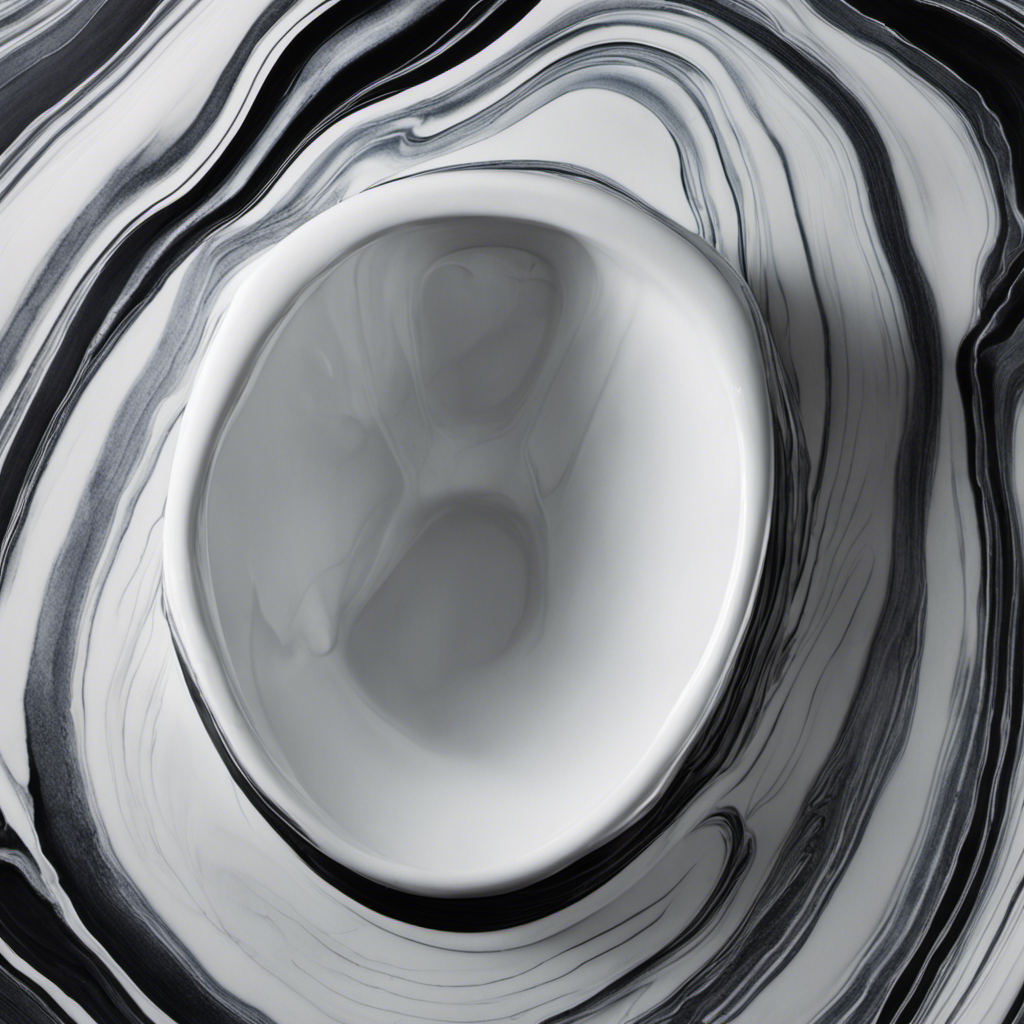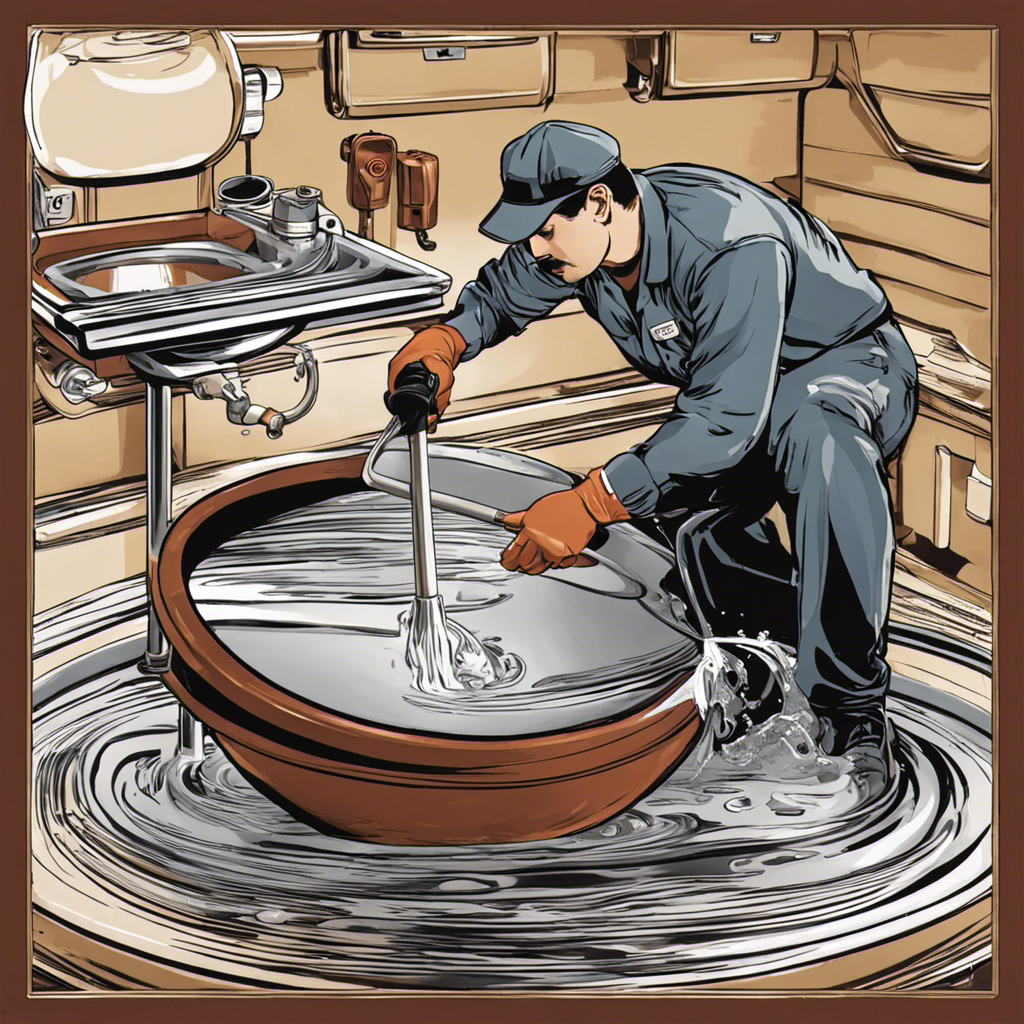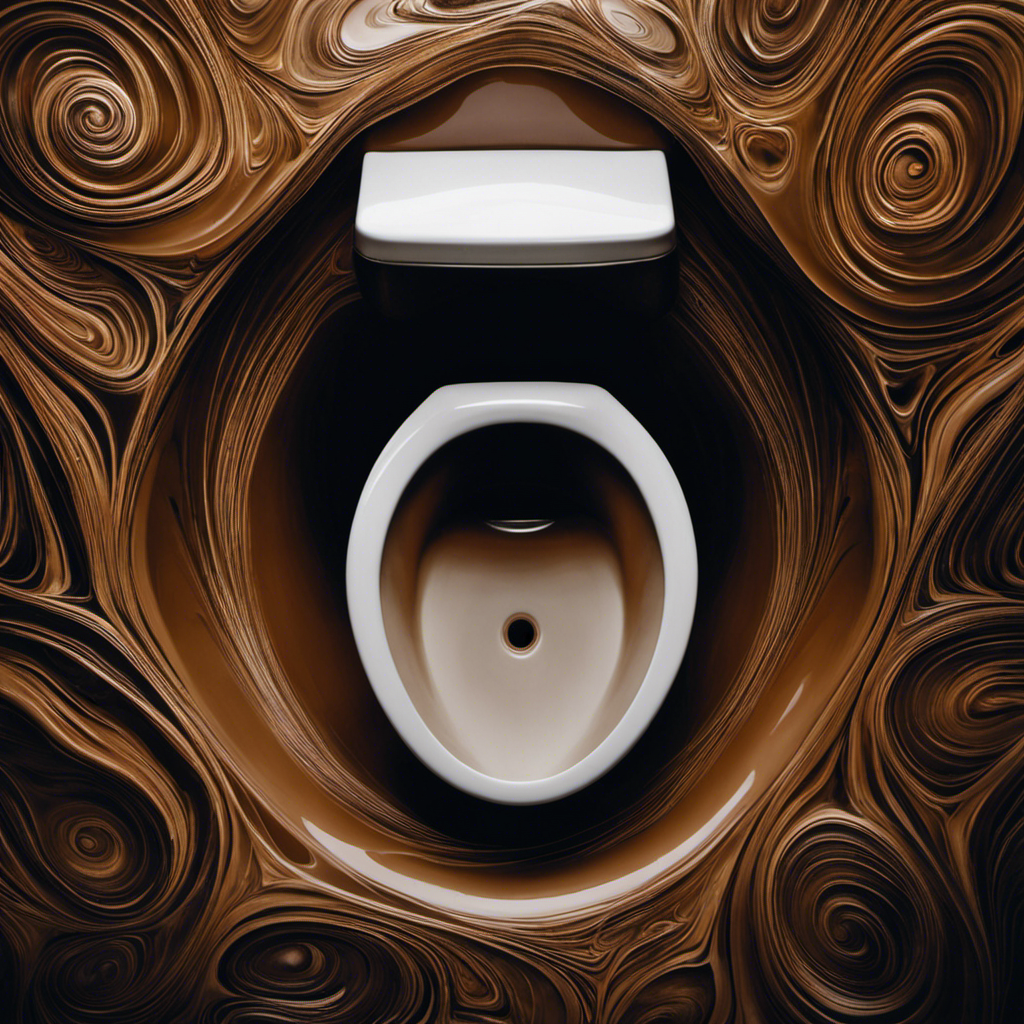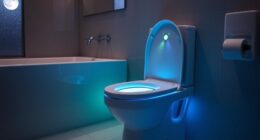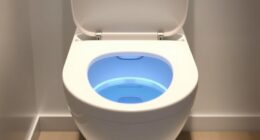I’ve seen some pretty nasty things in my time, but nothing quite compares to those dreaded black streaks in the toilet bowl. You know the ones I’m talking about – those stubborn, unsightly marks that seem to appear out of nowhere.
Well, fear not, because I’ve done my research and I’m here to shed some light on the culprit behind these mysterious stains. From mold and mildew to hard water stains and bacterial growth, there are a variety of factors at play.
So, grab your gloves and let’s dive into the fascinating world of toilet bowl stains.
Key Takeaways
- Mold and mildew thrive in damp, dark environments, making the toilet bowl a perfect breeding ground for them.
- Hard water stains and mineral deposits are responsible for the dark lines in the toilet bowl.
- Bacterial growth and biofilm formation contribute to the buildup of stains in the toilet bowl.
- Chemical reactions and oxidation can lead to the formation of rust stains in the toilet bowl.
The Role of Mold and Mildew
You may notice black streaks in your toilet bowl. One of the common causes for this is mold and mildew. Mold and mildew thrive in damp, dark environments. Your toilet bowl is the perfect breeding ground for them. To prevent mold and mildew from forming, it’s important to keep your bathroom well-ventilated and dry. Fix any leaks or drips that may contribute to excess moisture. Regular cleaning is also essential in preventing the growth of mold and mildew. Use a bleach-based cleaner or a mixture of vinegar and water to effectively remove any existing streaks and kill the spores. Scrub the bowl thoroughly, paying extra attention to the areas where the streaks are most visible. By following these mold prevention and cleaning techniques, you can keep your toilet bowl streak-free and hygienic.
Hard Water Stains and Mineral Deposits
Mineral deposits and hard water stains are often responsible for the unsightly dark lines in the toilet. These stains can be stubborn and difficult to remove, but with the right cleaning methods, you can restore your toilet bowl to its original pristine condition.
Here are three effective ways to tackle rust stains and mineral deposits:
-
Vinegar and Baking Soda: Mix equal parts vinegar and baking soda to create a paste. Apply it to the stained areas and let it sit for a few minutes before scrubbing with a toilet brush.
-
Lemon Juice: Squeeze fresh lemon juice onto the stains and let it sit for a while. The natural acidity of lemon juice helps break down the mineral deposits, making them easier to remove.
-
Commercial Cleaners: There are various commercial cleaners available specifically designed to remove rust stains and mineral deposits. Follow the instructions on the label to ensure safe and effective use.
By addressing these stubborn stains, you can prevent further buildup and promote a cleaner, more hygienic toilet bowl.
Now, let’s explore the issue of bacterial growth and biofilm formation.
Bacterial Growth and Biofilm Formation
The presence of bacteria and the formation of biofilm can contribute to the buildup of unsightly stains in your toilet. Bacterial contamination in the toilet bowl is a common problem that many people face. These bacteria feed on the organic matter present in the water and waste, creating a breeding ground for them to multiply. Over time, this can lead to the formation of a sticky biofilm that clings to the toilet bowl surface, making it difficult to remove. To effectively tackle this issue, it is important to use proper cleaning methods that target both the bacteria and the biofilm. Regular cleaning with disinfectants and scrubbing with a toilet brush can help eliminate bacterial contamination and prevent the formation of biofilm. Additionally, using toilet cleaning products specifically designed to tackle bacteria and biofilm can provide effective results.
| Cleaning Methods | ||
|---|---|---|
| Disinfectants | Scrubbing with toilet brush | Specialized toilet cleaning products |
Chemical Reactions and Oxidation
Chemical reactions and oxidation can contribute to the formation of stubborn stains in your toilet. Understanding these processes can help you effectively tackle those unsightly black streaks.
Here’s what you need to know:
-
Rust formation: When metal components in your toilet, such as bolts or pipes, come into contact with water, they can undergo a chemical reaction called oxidation. This can lead to the formation of rust, which can stain the toilet bowl.
-
Cleaning solutions: To remove rust stains caused by oxidation, it’s important to use the right cleaning solutions. Look for products specifically designed to tackle rust and mineral deposits. These cleaners often contain chemicals like phosphoric acid or hydrochloric acid, which can dissolve rust and restore the shine to your toilet bowl.
-
Prevention: Regular cleaning and maintenance can help prevent rust formation and keep your toilet looking clean. Consider using a toilet tank cleaner that contains rust inhibitors to minimize the chances of rust stains forming in the first place.
Environmental Factors and Poor Ventilation
To effectively prevent stubborn stains in your toilet, it’s important to consider the impact of environmental factors and ensure proper ventilation. Poor hygiene and plumbing issues can contribute to the accumulation of black streaks in the toilet bowl. These stains are often caused by mold and mildew growth, which thrive in damp and poorly ventilated environments. Without regular cleaning and proper airflow, these contaminants can multiply and leave unsightly marks in the toilet bowl. Additionally, plumbing issues such as leaks or faulty seals can lead to excess moisture, providing the perfect conditions for mold and mildew to thrive. By addressing these environmental factors and maintaining good hygiene practices, you can prevent black streaks and keep your toilet clean and fresh.
| Environmental Factors | Poor Ventilation |
|---|---|
| Dampness | Lack of airflow |
| Mold and mildew | Stagnant air |
| Plumbing issues | Moisture buildup |
| Lack of cleaning | |
| Neglected maintenance |
Frequently Asked Questions
How Do I Prevent Black Streaks in My Toilet Bowl?
To prevent black streaks in my toilet bowl, I focus on effective toilet bowl cleaning techniques. Understanding the common causes of these streaks is key. By staying proactive and diligent in my cleaning routine, I can keep my toilet bowl looking clean and streak-free.
Can Black Streaks in the Toilet Bowl Be Harmful to My Health?
Black streaks in the toilet bowl can be a concern for health. It is important to know how to effectively clean them and consider the impact of water quality on their formation.
Are There Any Natural Remedies for Removing Black Streaks in the Toilet Bowl?
There are natural remedies for removing black streaks in the toilet bowl. DIY toilet bowl cleaners, like vinegar and baking soda, can effectively get rid of these stains without the need for harsh chemicals.
Can Using Certain Cleaning Products Contribute to the Formation of Black Streaks in the Toilet Bowl?
Using certain cleaning products can contribute to black streaks in the toilet bowl. Regular toilet bowl maintenance is crucial to prevent this. Understanding the common causes of toilet bowl stains can help keep your bathroom clean.
Are There Any Specific Toilet Bowl Cleaners That Are More Effective in Preventing Black Streaks?
There are specific toilet bowl cleaners that are more effective in preventing black streaks. It’s important to consider the toxicity of common cleaners and the impact of hard water on these streaks.
Conclusion
In conclusion, the black streaks in your toilet bowl can be caused by a variety of factors.
Mold and mildew thrive in damp environments, leaving unsightly marks behind. Hard water stains and mineral deposits can also contribute to the problem, creating stubborn discoloration.
Bacterial growth and biofilm formation further exacerbate the issue, making it harder to clean. Additionally, chemical reactions and oxidation play a role in the formation of these dark streaks.
Lastly, poor ventilation and environmental factors can contribute to the persistence of these uninvited guests.
